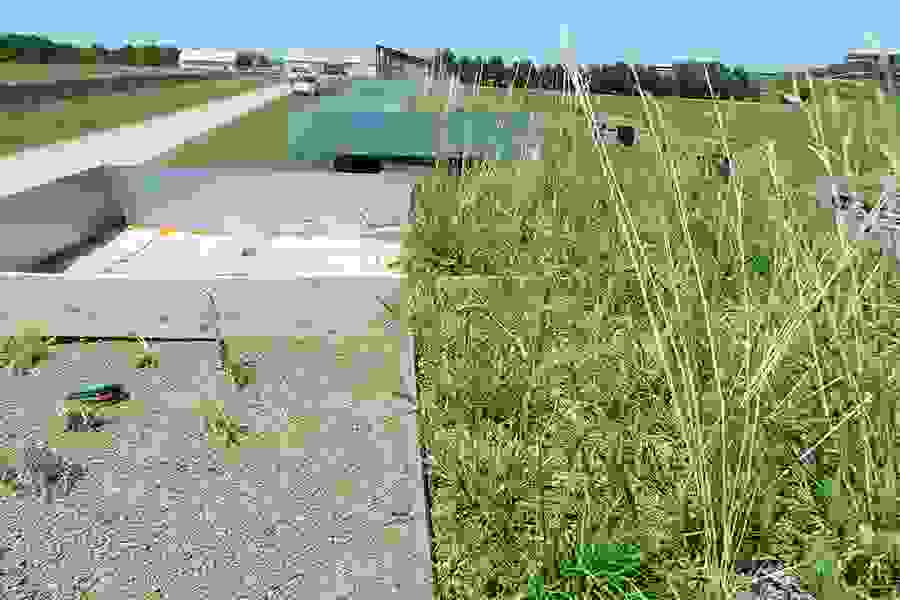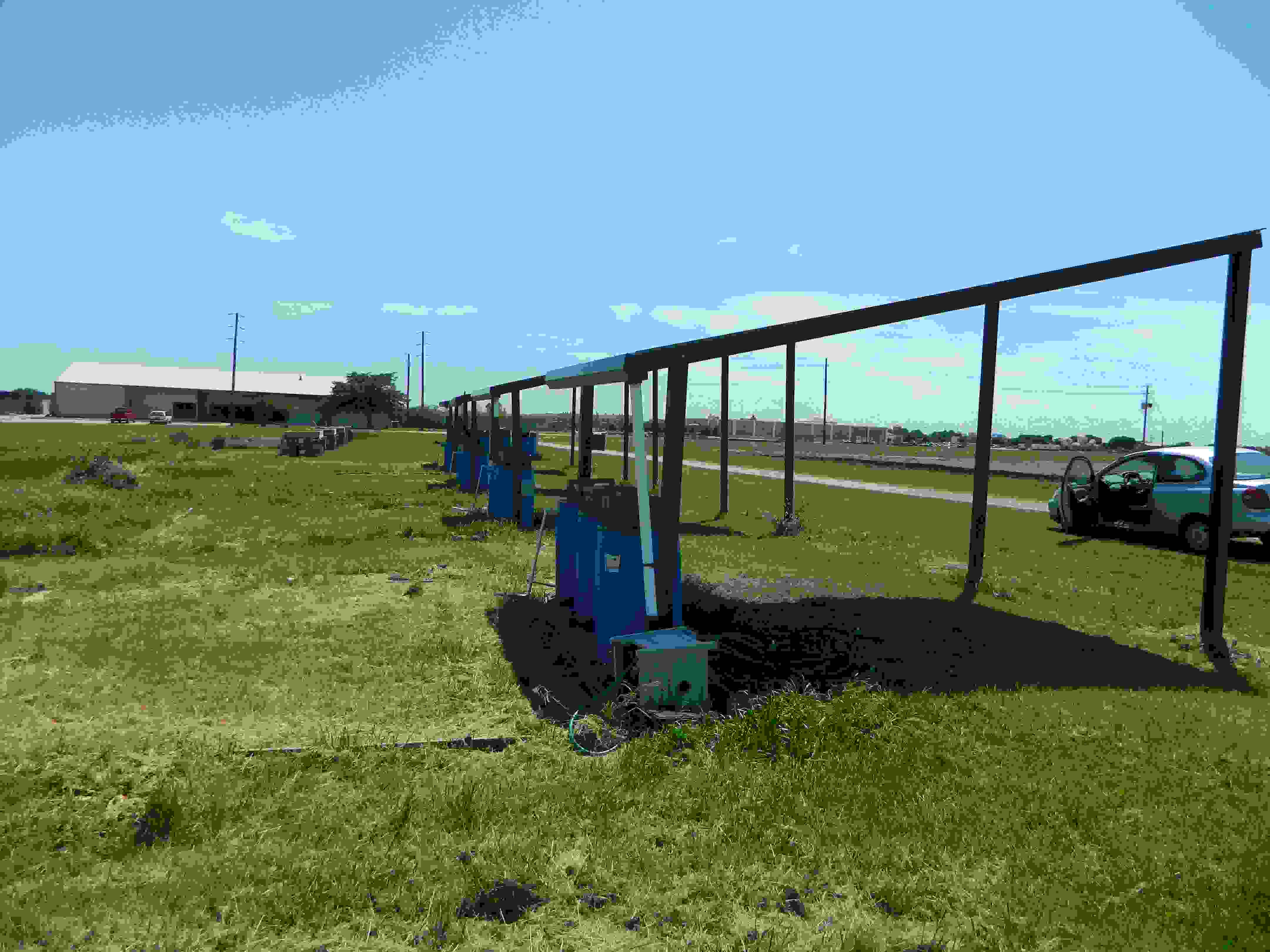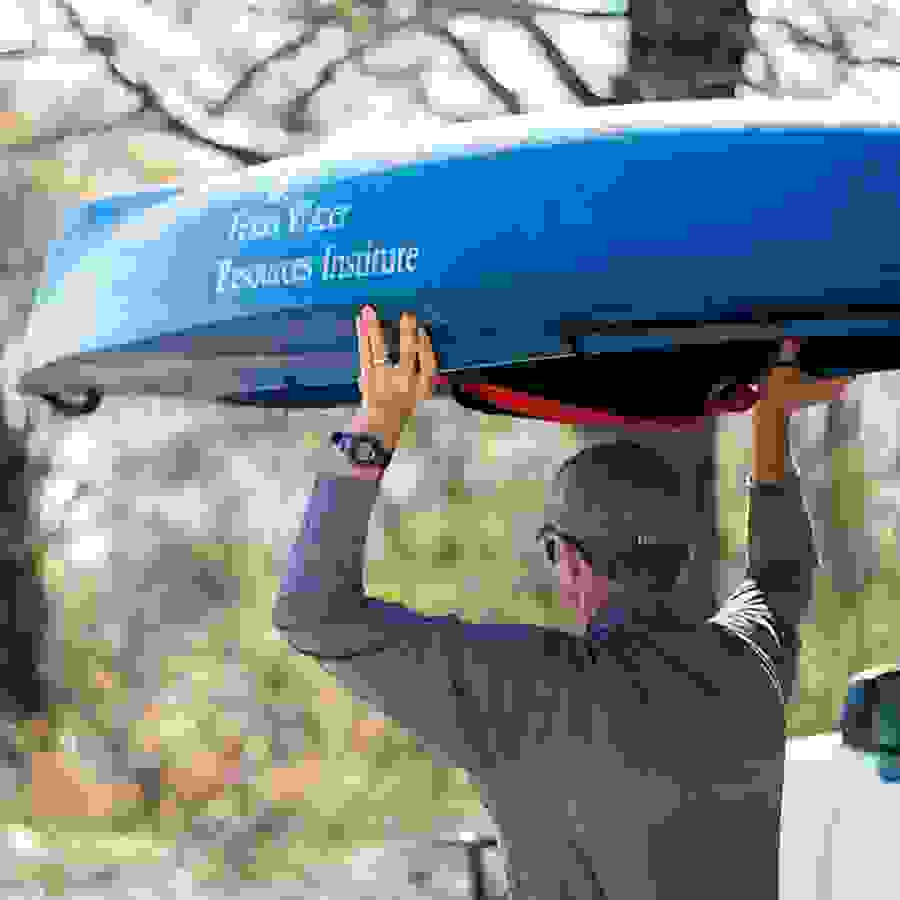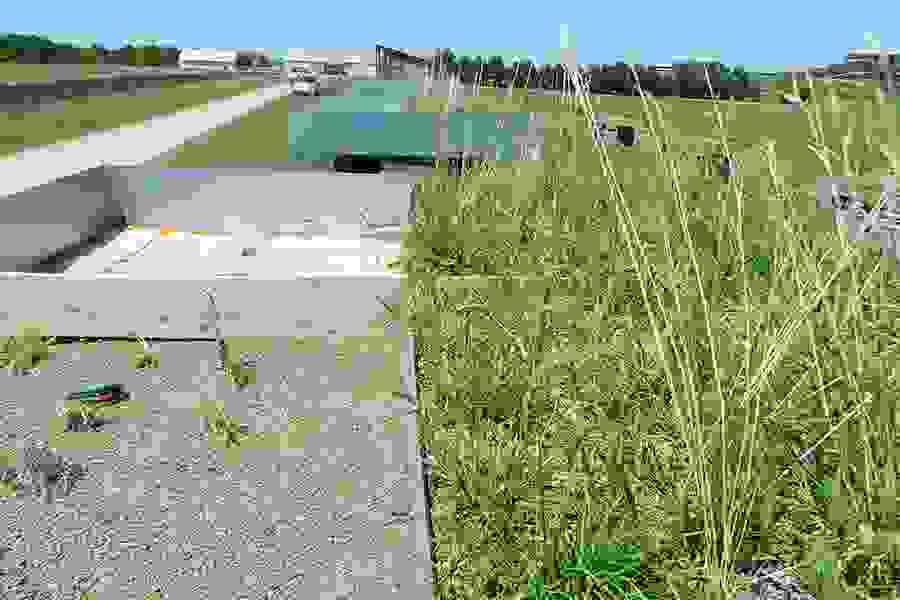By Claire Corley
Texas’ urban areas are growing, and that means more impervious surfaces, less natural filtration of water through soils and more stormwater carrying pollutants into streams. Studies in recent years at the Texas A&M AgriLife Research and Extension Center in Dallas have proven the effectiveness of low impact development (LID) practices in reducing these negative environmental impacts of urban growth.
Dr. Fouad Jaber, Texas A&M University associate professor and Texas A&M AgriLife Extension Service specialist at the Dallas center, has been designing and testing several LID practices including green roofs, permeable pavements and rain gardens through a Clean Water Act grant funded by the U.S. Environmental Protection Agency through the Texas Commission on Environmental Quality.
“When you urbanize an area, instead of rainwater infiltrating, runoff goes into stormwater pipes and that results in a lot of damage downstream,” he said. Urban watersheds also cause increased flooding and reduced groundwater recharge. However, Jaber said LID practices use natural elements to minimize negative environmental impacts of urbanization.
“One of the benefits of the structures is that they encourage water filtration and retention,” Jaber said.
Each LID structure at the Dallas center collects the first two inches of rain, getting rid of settling dirt from the last rain, or as Jaber calls it, ‘the first flush,’ to reduce pollutants flowing into water bodies.
Green roofs
One of the practices Jaber has tested is the green roof, which can provide a more aesthetically appealing look to concrete buildings.
Green roofs refer to roofs partially or completely covered by topsoil and planted with vegetation. The roofs have a waterproof membrane and drainage area and are planted with native plants. By adding these touches, some of the rainwater will be caught in the soil for the plants, allowing only a portion of the runoff to end up in the gutters, Jaber said.
“Green roofs are basically a way to green up the footprint of buildings,” he said.
He said in his tests at the Dallas center, 75 percent of the runoff on a yearly basis was captured by a green roof, alleviating added pollution to stormwater.
“We have a famous green roof in the Dallas area even though people don’t identify it as such,” Jaber said, referring to Klyde Warren Park, a popular urban park in Dallas that is on top of a section of the Woodall Rodgers Freeway and serves as green roof.
The 5.2-acre park, composed of 37 native plant species and 322 trees, includes walking trails, a dog park, a children’s park and game areas.

Permeable pavement
Jaber has also tested four permeable pavement types to see which reduces runoff the most. Out of the four — permeable concrete, interlocking concrete, gravel paver and grass paver — the grass paver performed the best, with a total volume reduction rate of 93 percent.
The idea with these pavers is that rainwater and sediment pass through the surface allowing for the sediment and pollutants to be trapped before the water reaches outlet pipes that lead to a sewer or stream, Jaber said.
One challenge is there are limited areas where grass pavers can be installed, he said.
“They are really intended for overflow and occasional parking,” Jaber said. “Football stadiums, where you park once a week for four months, or churches just on Sunday, those would be good for grass pavers.”
On the other hand, the other three pavement types performed equally and could replace any parking lot, since they are made up of concrete or gravel material, he said. While there was not a performance difference in the three, there are aesthetic and price differences. Based on an informal poll of the many visitors that toured the center’s site over the past few years, Jaber said it appears that people preferred the interlocking concrete pavers more, but they are more expensive than the gravel pavers.
“You have an option here to go with cheap and less aesthetic or expensive and more aesthetic for the same technical performance,” Jaber said.

Rain gardens
Rain gardens or bioretention areas are full ecological systems that work to reduce the total runoff volume from either residential or commercial areas, Jaber said.
Residential rain gardens are planted in yards to alleviate runoff problems. Typically 6 to 8 inches deep, the rain garden is heavily planted so the runoff has no place to go but to infiltrate into the soil or evaporate from the plants, he said. Commercial rain gardens can be used in road medians or alongside parking lots.
At the Dallas center, the rain garden, which collects runoff from a 37,000-square-foot parking area on the center’s grounds, reduced stormwater volume by 49 percent.
Rain gardens also address high levels of pollutants.
“They break down nitrate into nitrogen gas that reduces nitrogen pollution. They also reduce phosphorus pollution and pesticide pollution,” Jaber said.
Added benefits
Along with environmental benefits, he said these LID practices also positively affect the economy.
“Economic benefits can result due to less costly water treatment, smaller stormwater systems and reduced flooding,” Jaber said.
Another economic benefit can be found with green roofs. In addition to reducing runoff, green roofs can also reduce energy costs for cooling and heating a building because they provide insulation.
Jaber said studies have shown green roofs greatly reduce inside temperature as compared to conventional roofs, and temperatures can be even lower than ambient air during the morning time. Conventional roof temperatures can exceed 90 degrees on a sunny day, and most of that heat transfers to the inside of the building below the roof.
These practices are used throughout Texas, but Jaber’s project in Dallas was one of the first when it began in 2012.
The Dallas center’s ongoing education program on LID stormwater management teaches cities, consulting firms and Master Naturalist and Master Gardener chapters how to deal with stormwater in an environmentally friendly way.
After completing testing, Jaber saw more and more LID practices pop up around the Dallas area. “People have called me to help design them, so I’ve been part of at least 15 rain gardens built here in the Dallas area,” he said.
Jaber said all the LID practices at the Dallas center were monitored and tested for small rain events but could be built to withstand larger storms.

“Typically, LID structures are designed to capture the first flush (less than two-inch storms) to reduce pollution and are small scale and can be integrated within a development or a landscape without using additional space,” Jaber said. “But, in most cases, flooding is a result of extreme rain events.
“To reduce flooding from extreme events using LID, there is a little bit of design and planning, and a little bit of critical thinking in eventually being able to install enough structures to reduce flooding and improve water quality.”
This planning might require integrating rain gardens in all road medians, installing a rainwater harvesting system on most houses and using permeable pavement on most parking spaces.
Jaber said the hope is that these practices will help improve overall water quality in urban areas.












